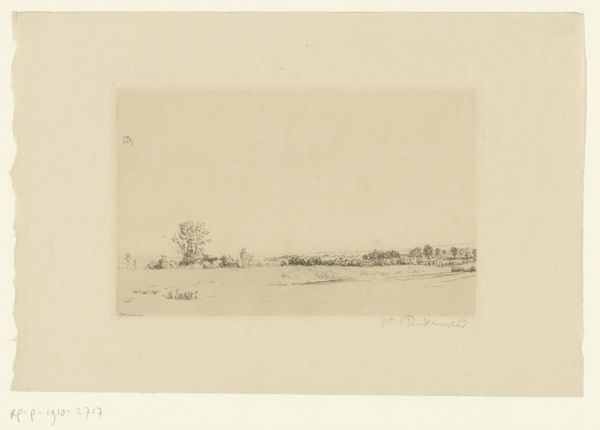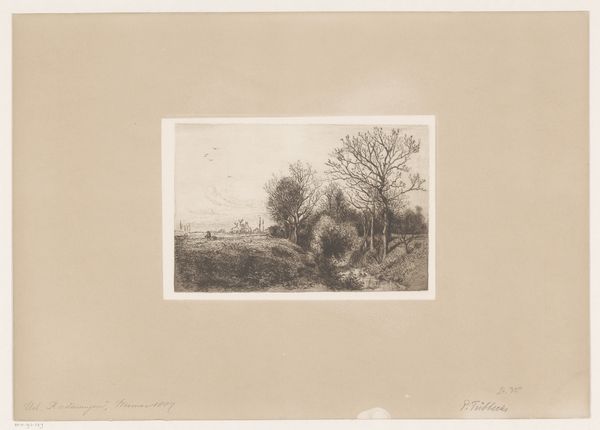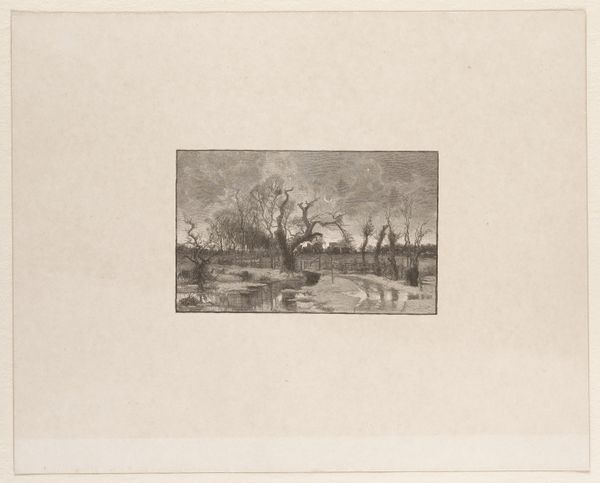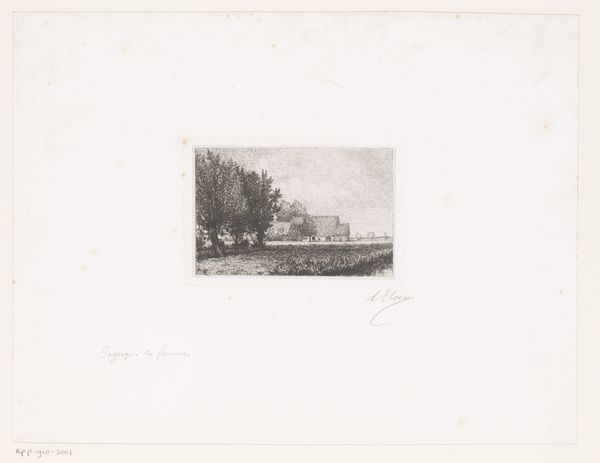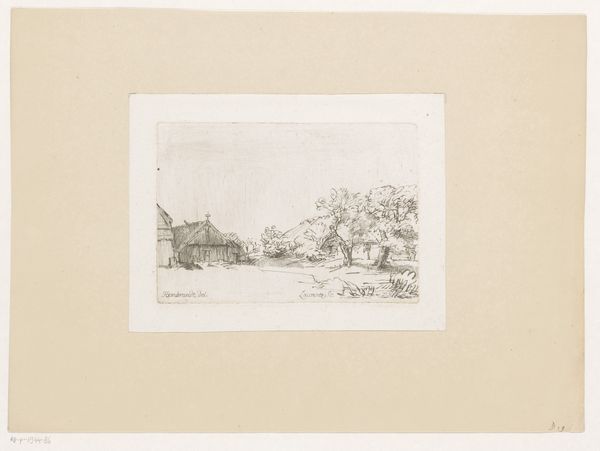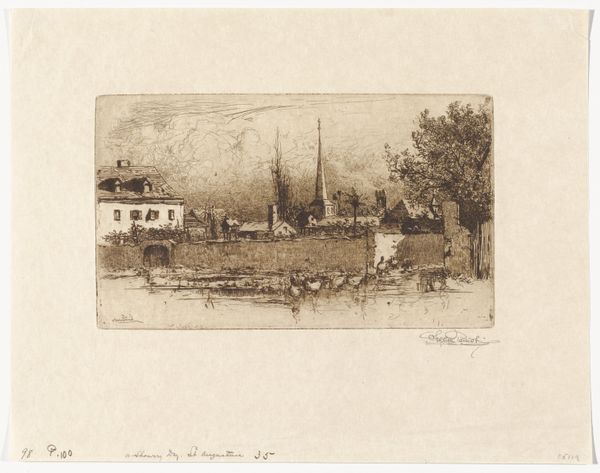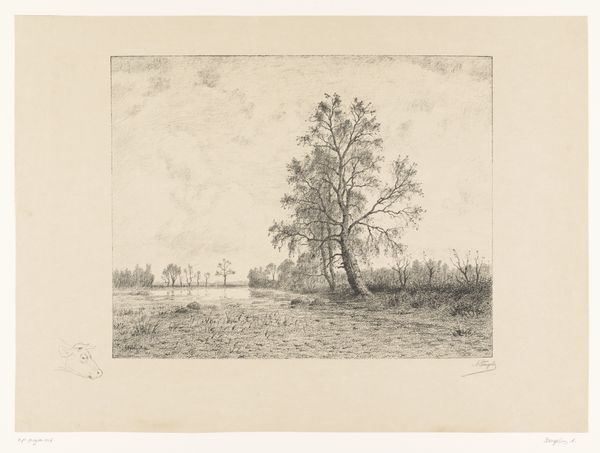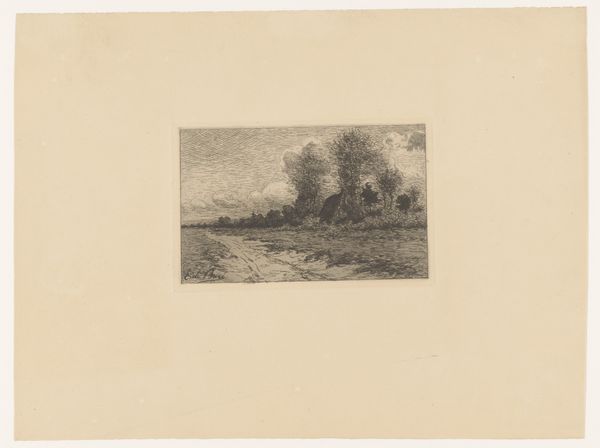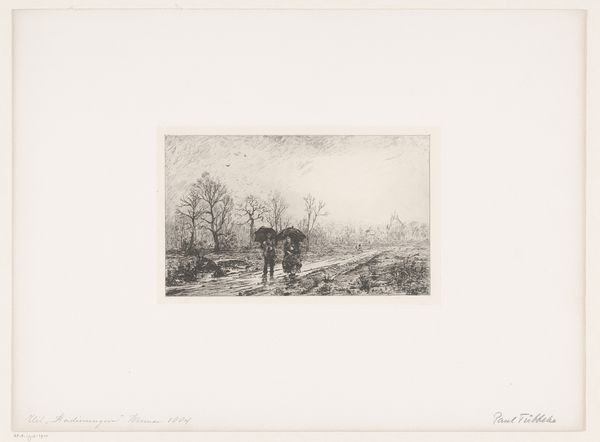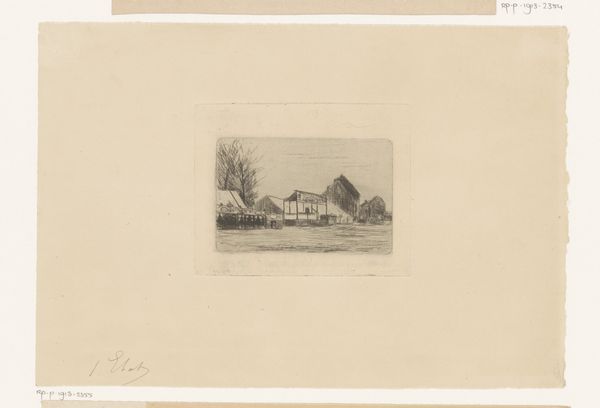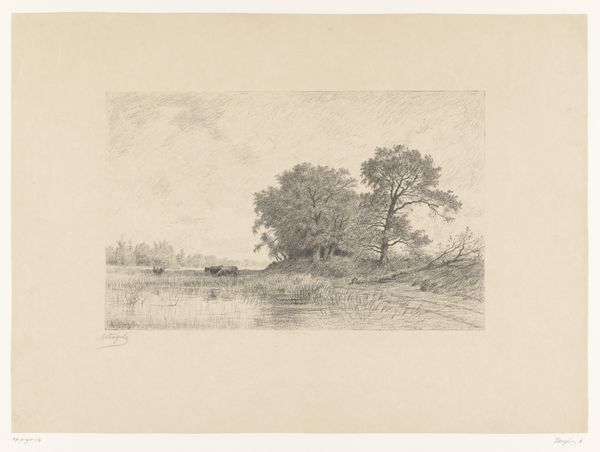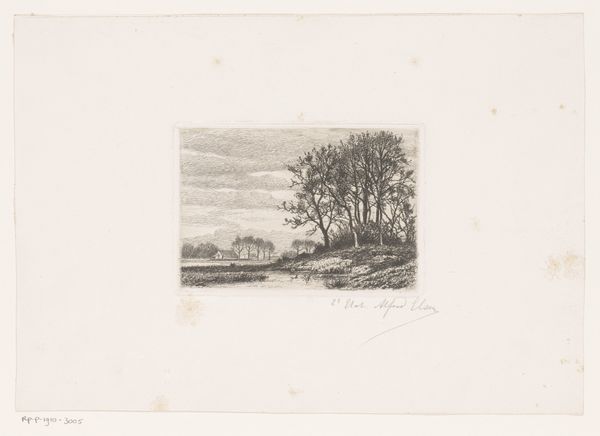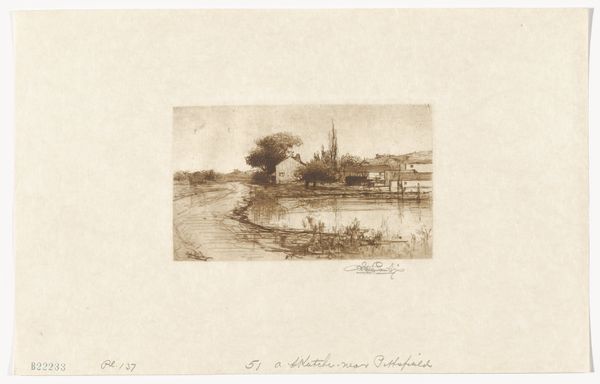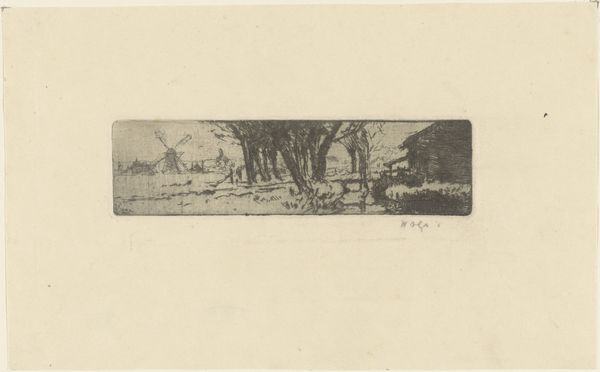
drawing, print, etching, graphite
#
drawing
# print
#
etching
#
landscape
#
graphite
#
realism
Dimensions: 5 1/4 x 8 3/4 in. (13.34 x 22.23 cm) (plate)12 3/4 x 17 1/4 in. (32.39 x 43.82 cm) (sheet)
Copyright: Public Domain
Editor: We're looking at "Sellers Hall," an etching by Stephen Parrish, dating from around the 19th century. The scene is serene, almost desolate. I notice how the bare trees dominate the composition, stark against the open field and simple buildings. How do you interpret this work? Curator: This print evokes a strong sense of place and time, doesn't it? But beyond the literal depiction, consider what Parrish might be subtly conveying about the relationship between humanity and the land. These rural scenes were being rapidly transformed during the late 19th century. Do you see this as a neutral depiction, or could it be interpreted as a commentary on that shift? Editor: That’s a fascinating point. I hadn’t considered the element of change. Perhaps the starkness emphasizes what is being lost, that slower-paced existence. Do you think there’s a specific message about industrialization? Curator: I think it's less a direct protest against industrialization and more a reflection on a changing world. Look at the scale of the buildings compared to the vastness of the landscape. There's a power dynamic being portrayed. Whose values are reflected in this picture? How might someone without land see it? Editor: I see what you mean. It brings up questions about ownership, about who has the privilege to define and represent the landscape. Curator: Precisely. These seemingly simple landscapes are imbued with social and historical meaning, inviting us to consider whose stories are told, and whose are left out. Editor: Thinking about it that way really opens up the work! I initially just saw a pretty landscape, but now I recognize all of these layers of meaning regarding society and class. Curator: Exactly! And by interrogating those layers, we move beyond passive observation toward a more active and engaged understanding of art.
Comments
No comments
Be the first to comment and join the conversation on the ultimate creative platform.
